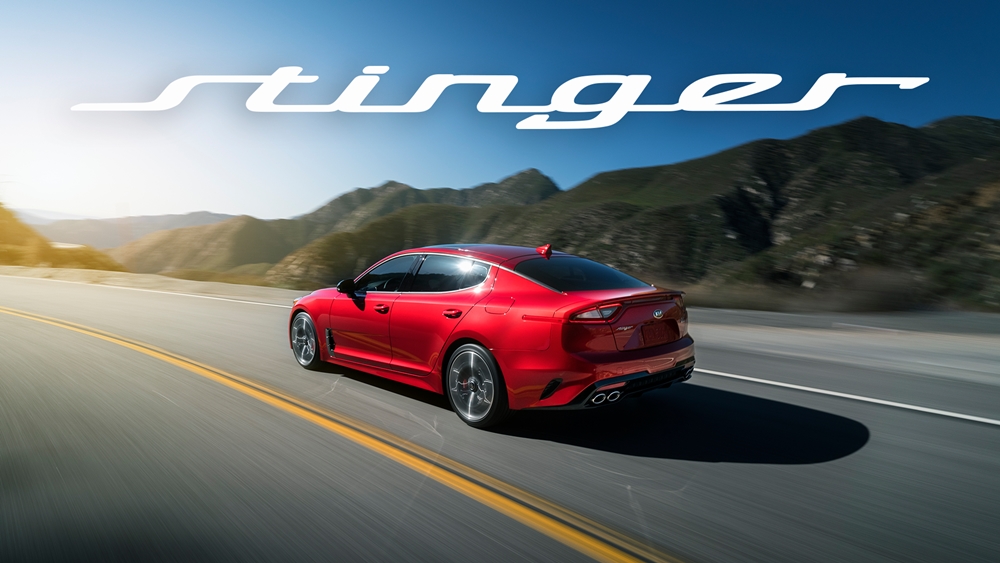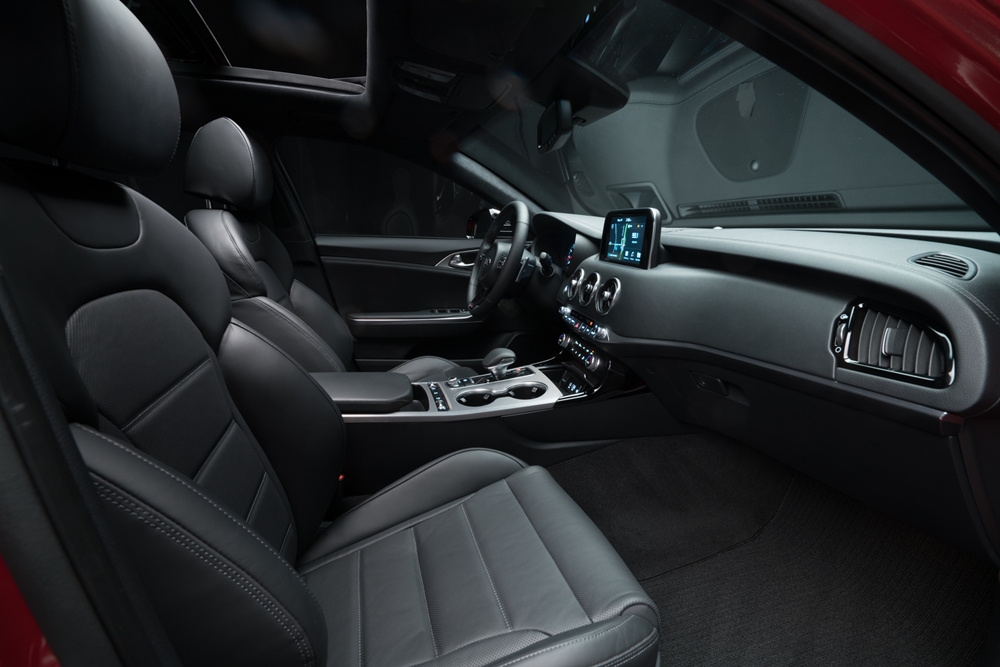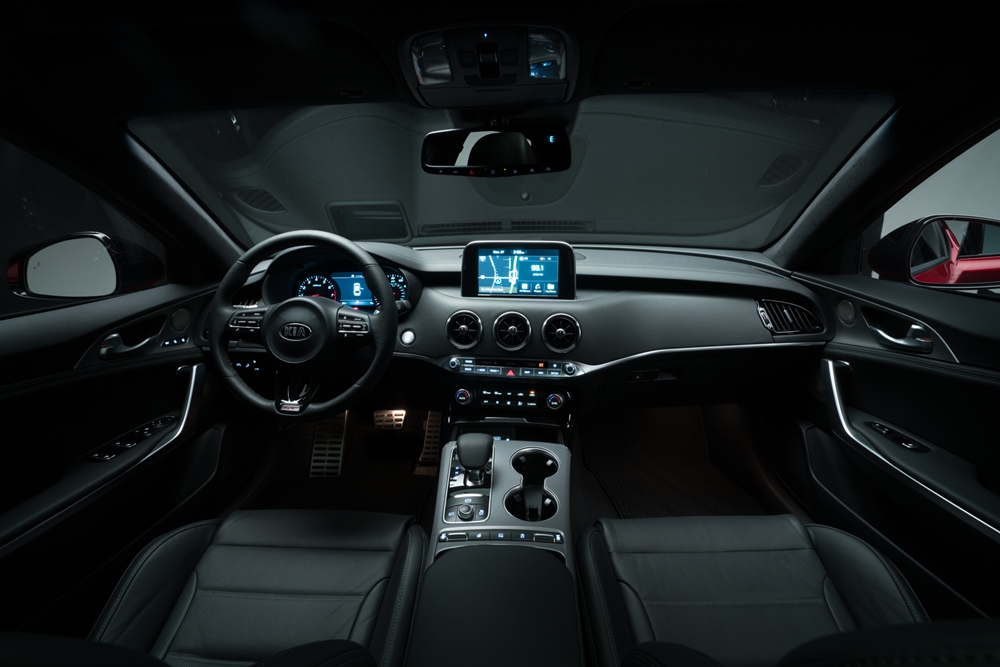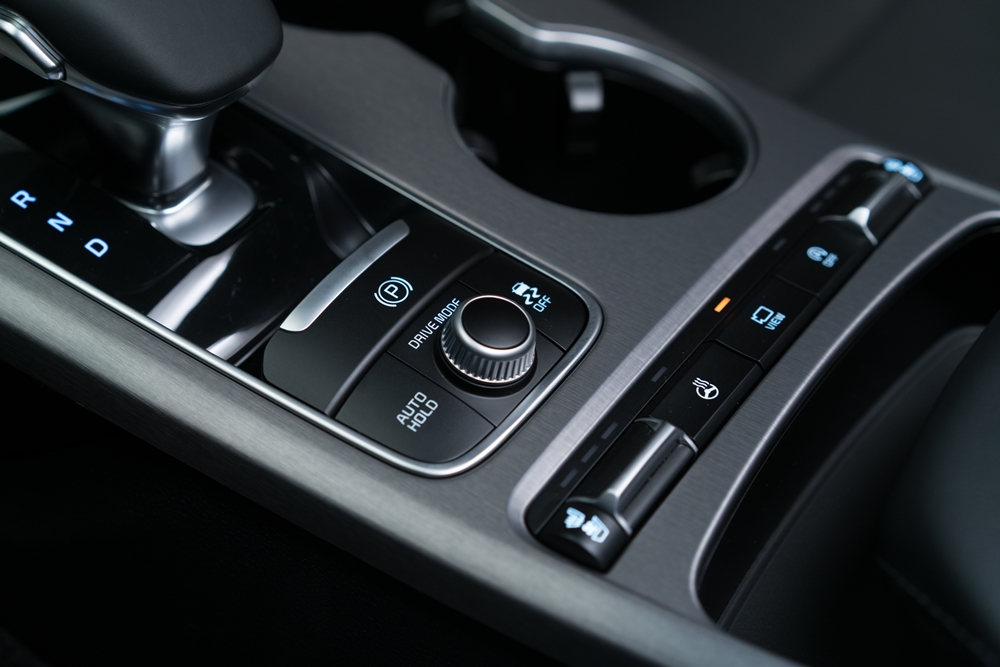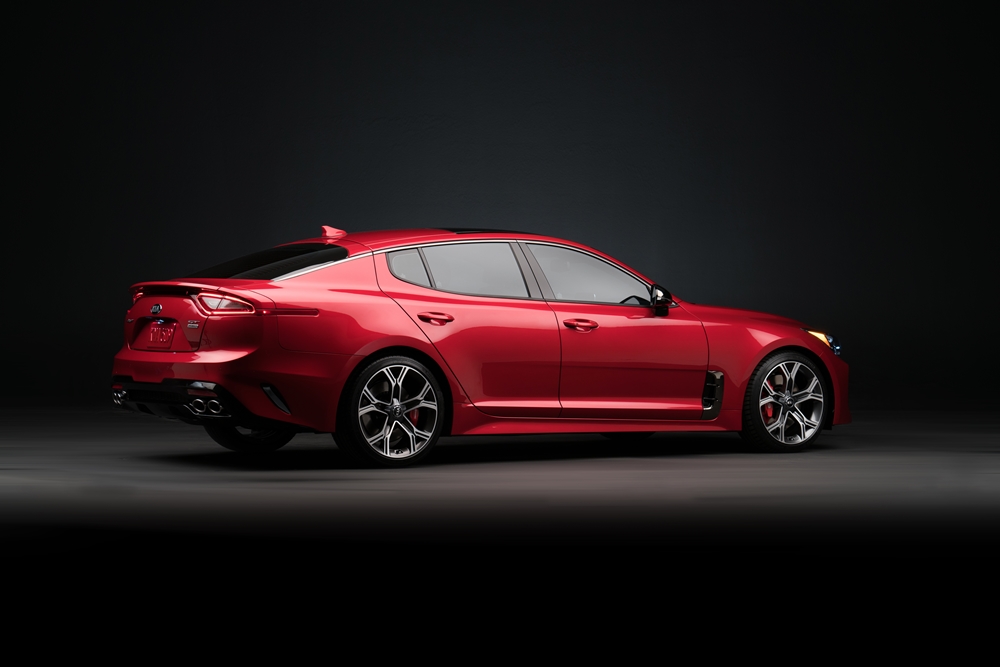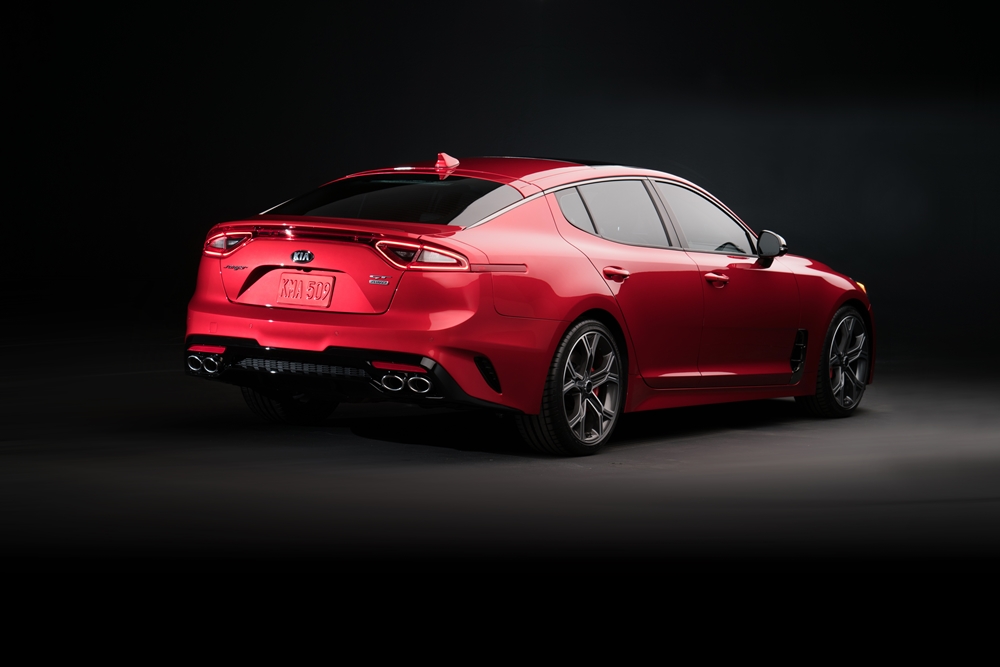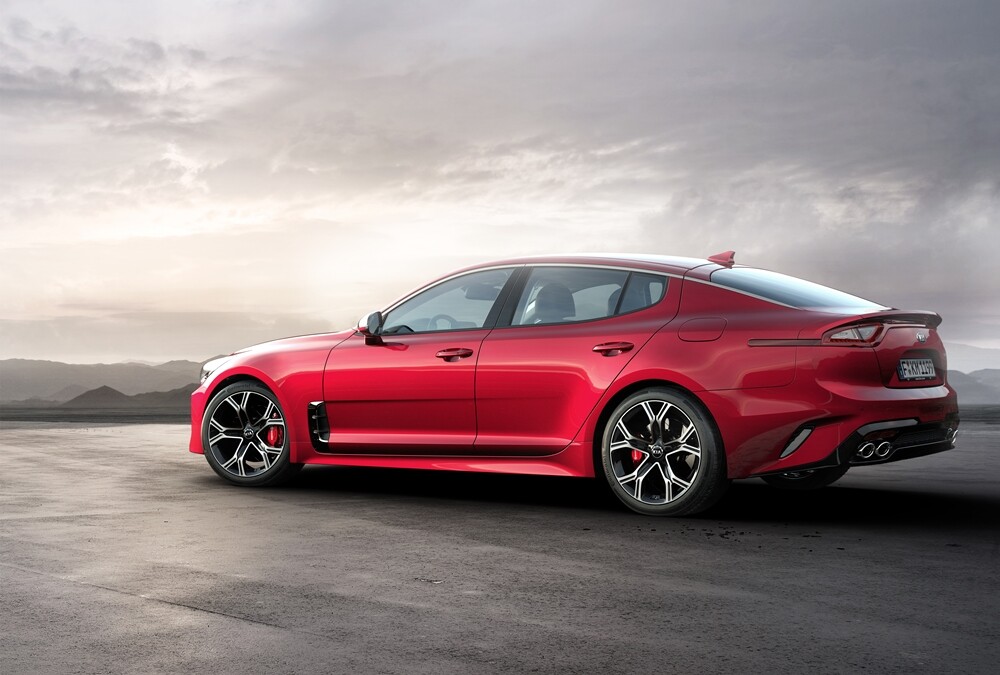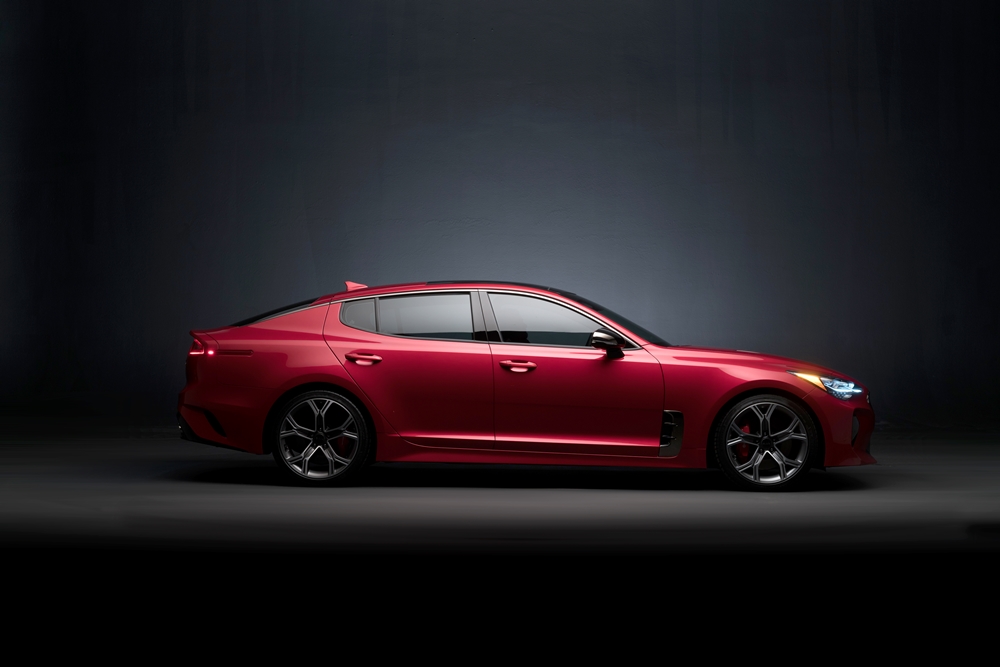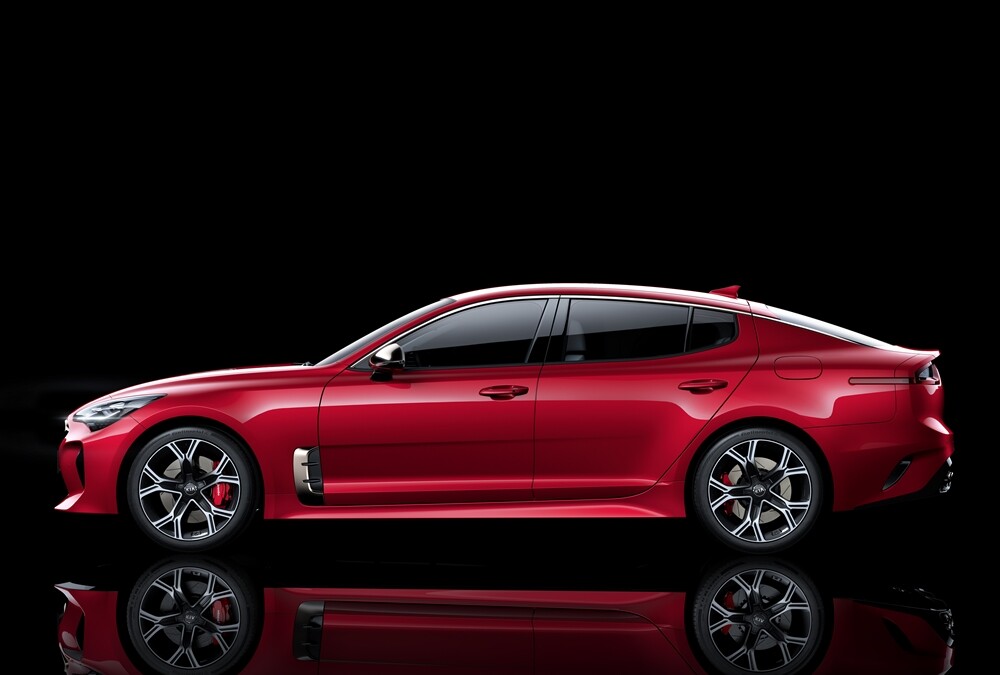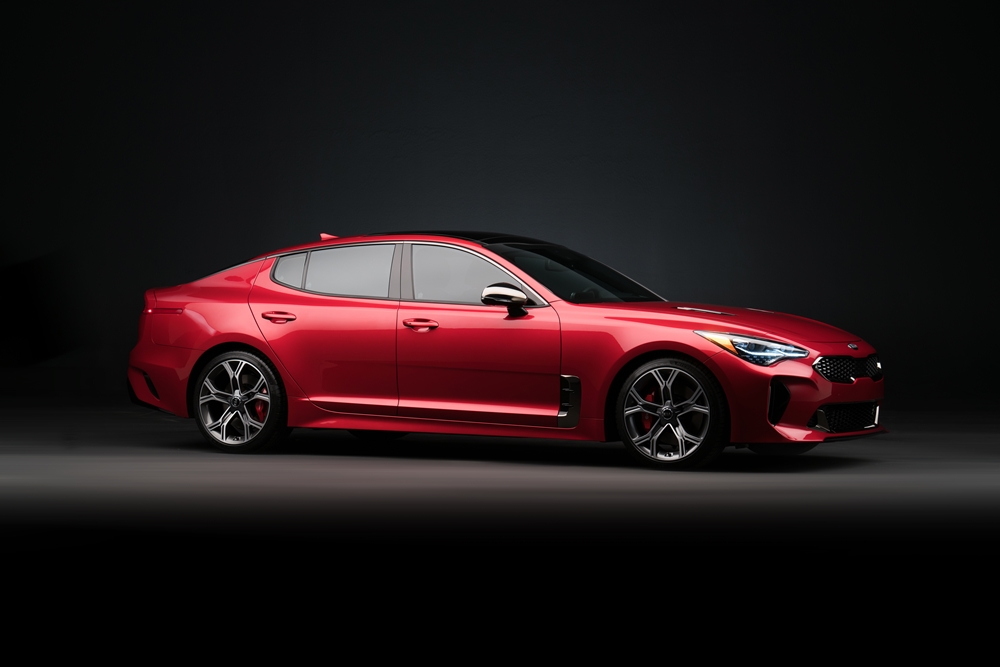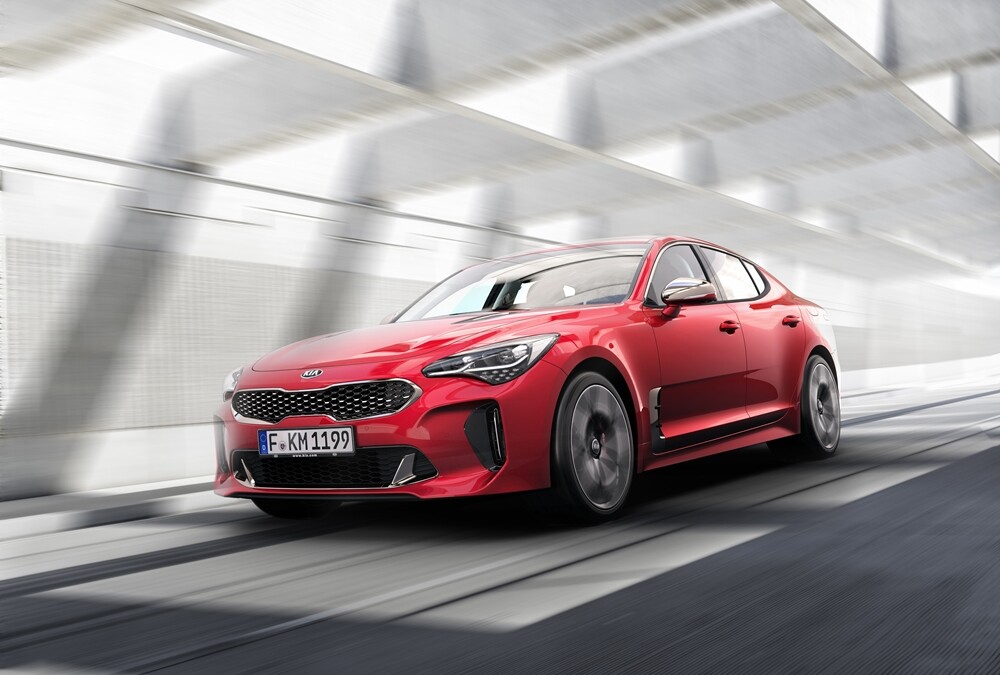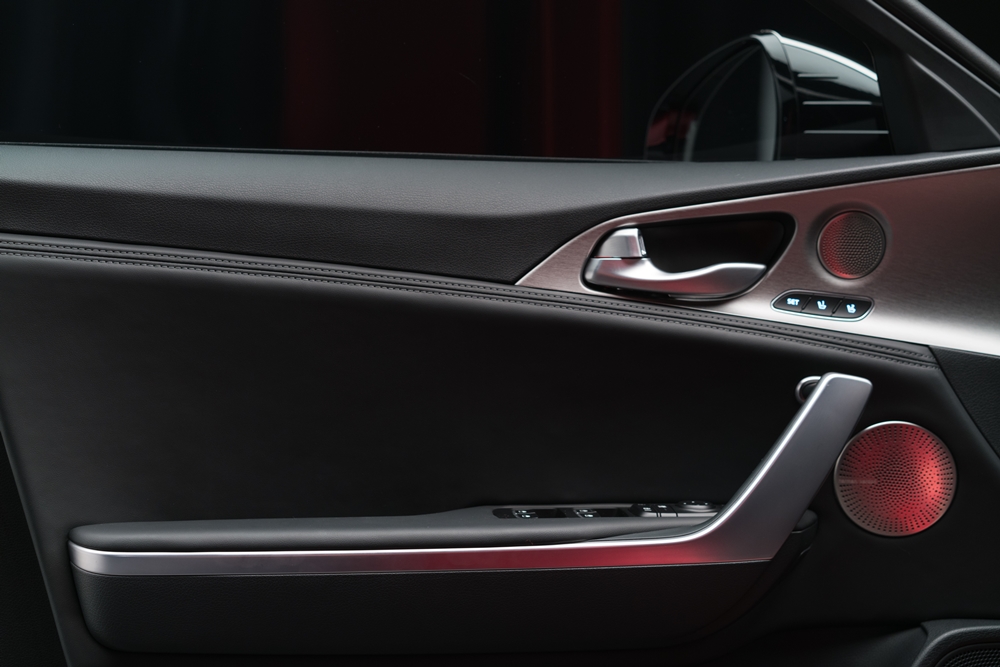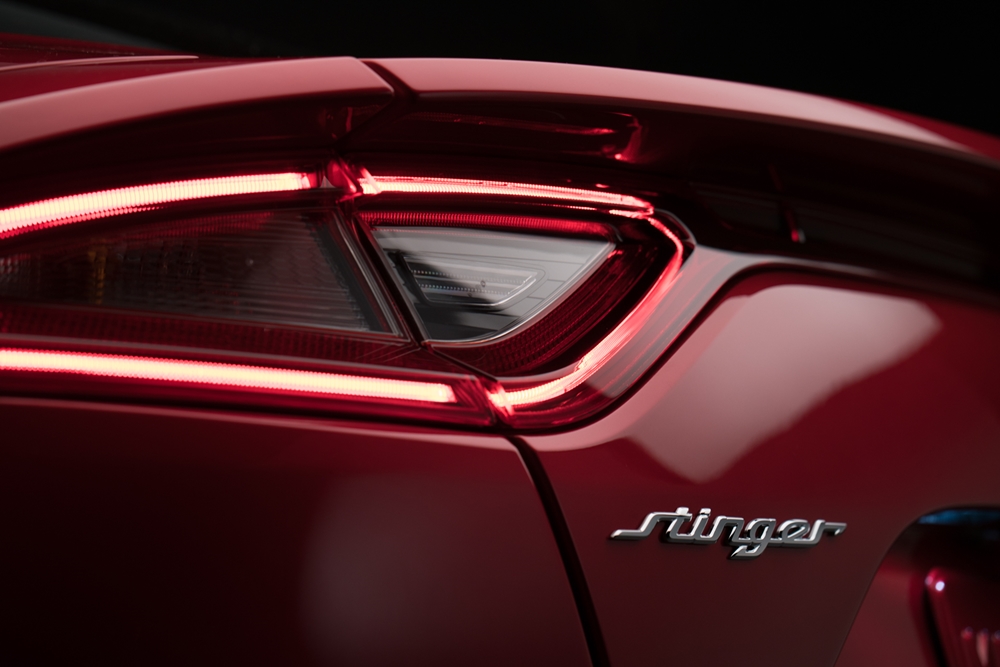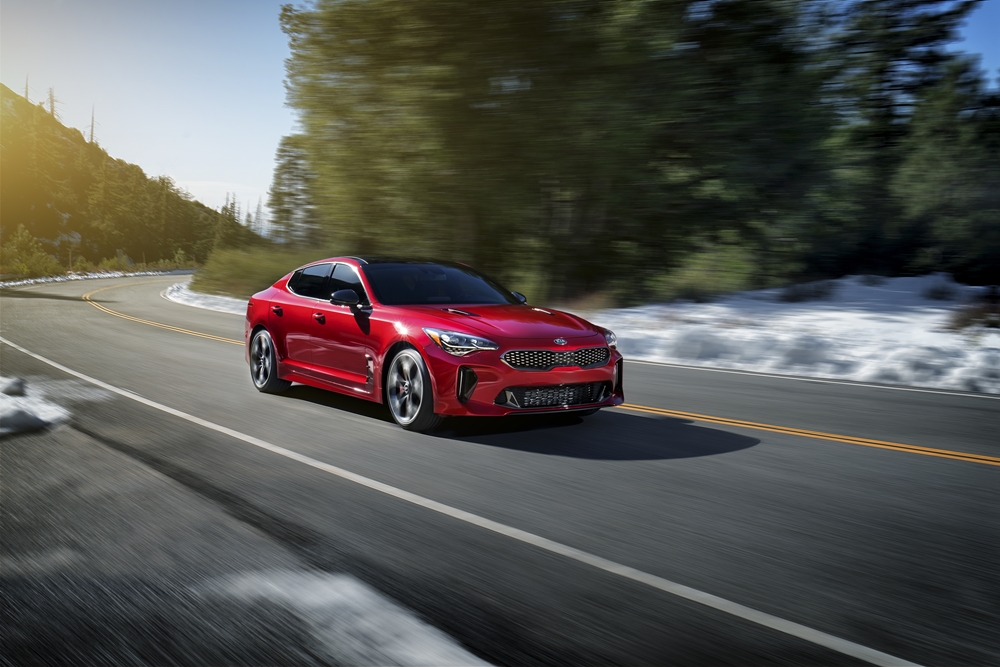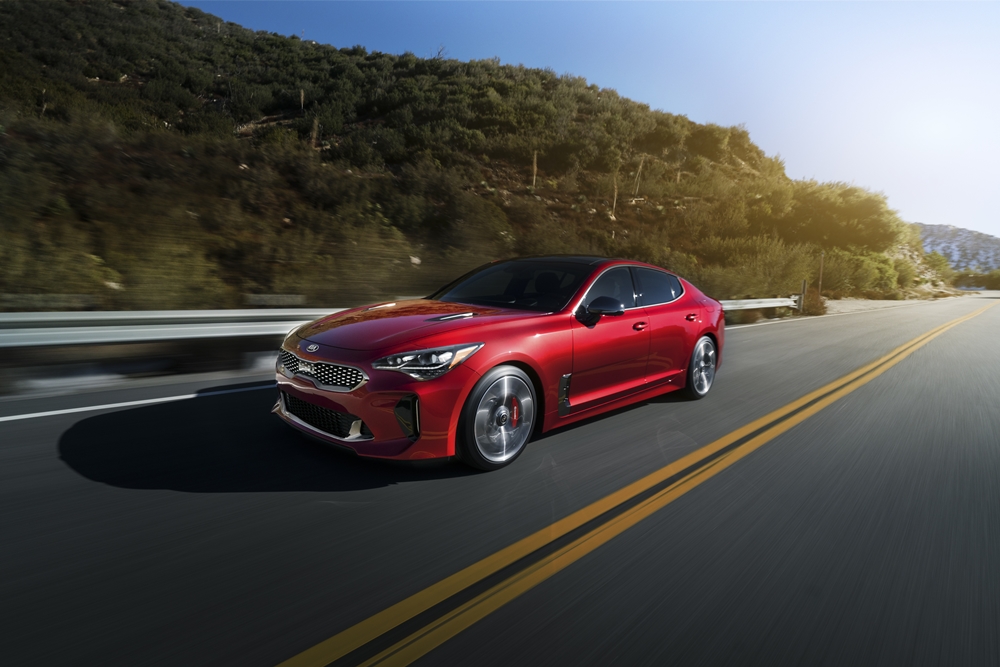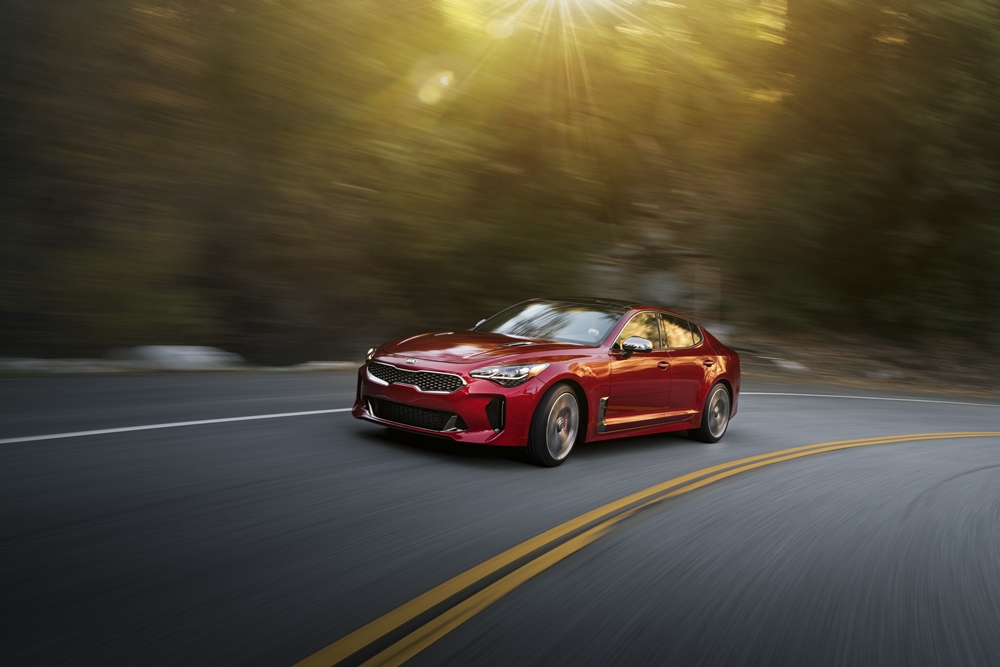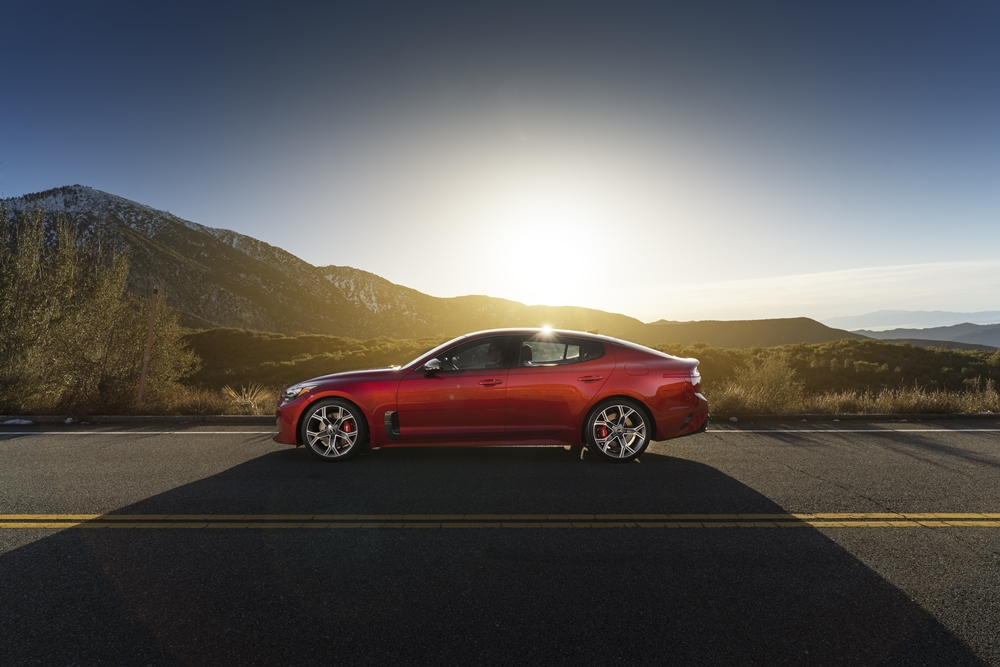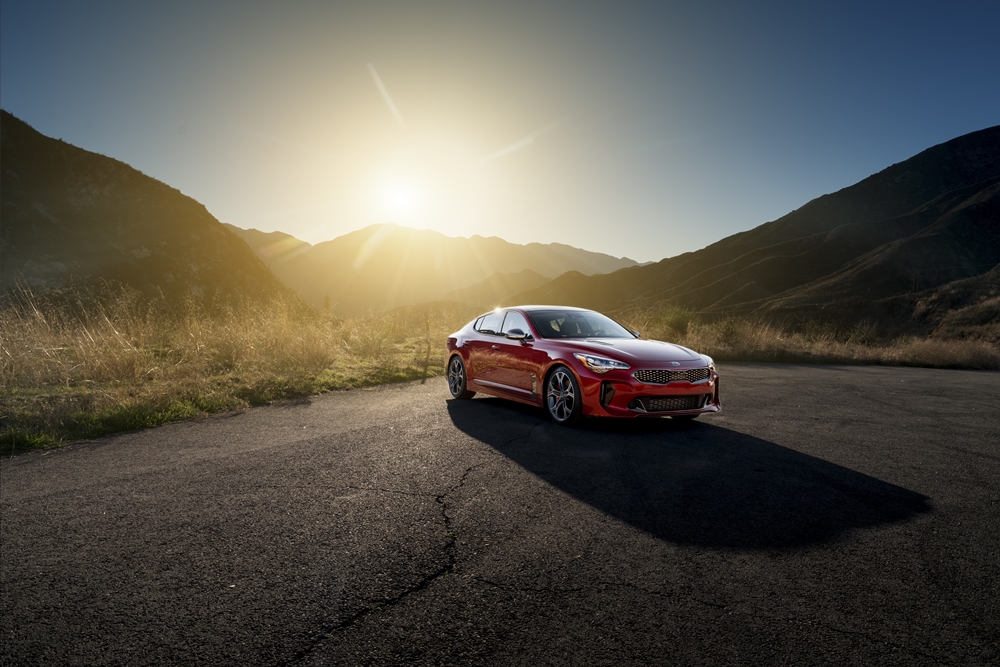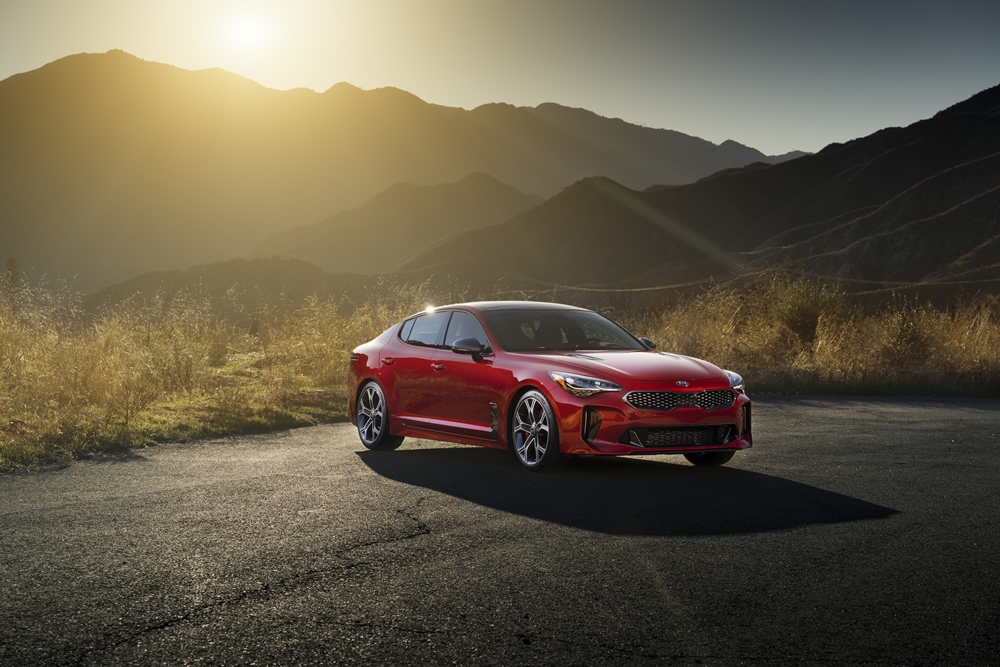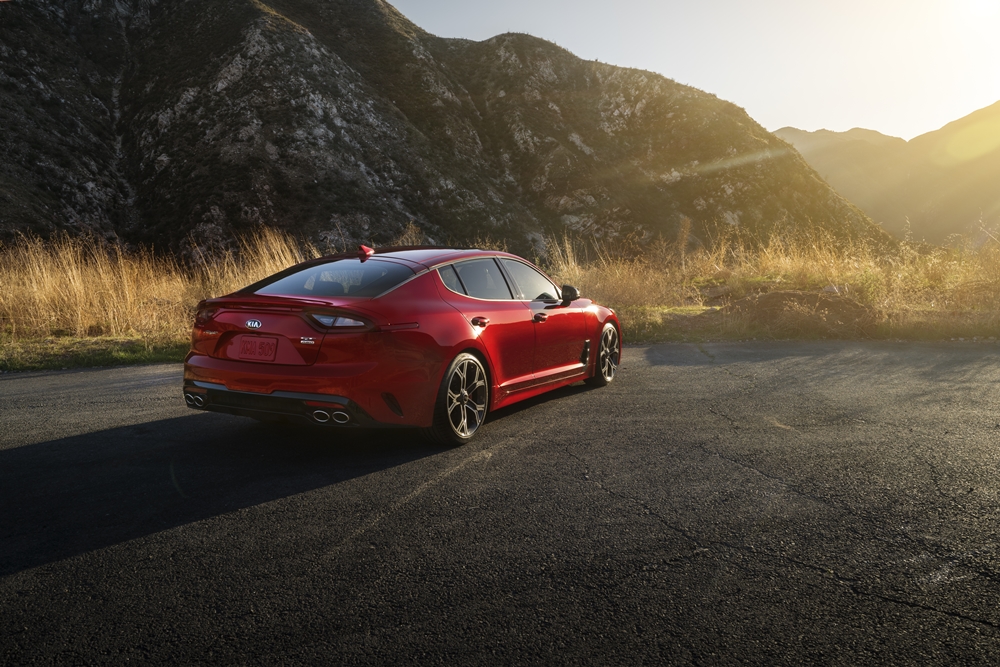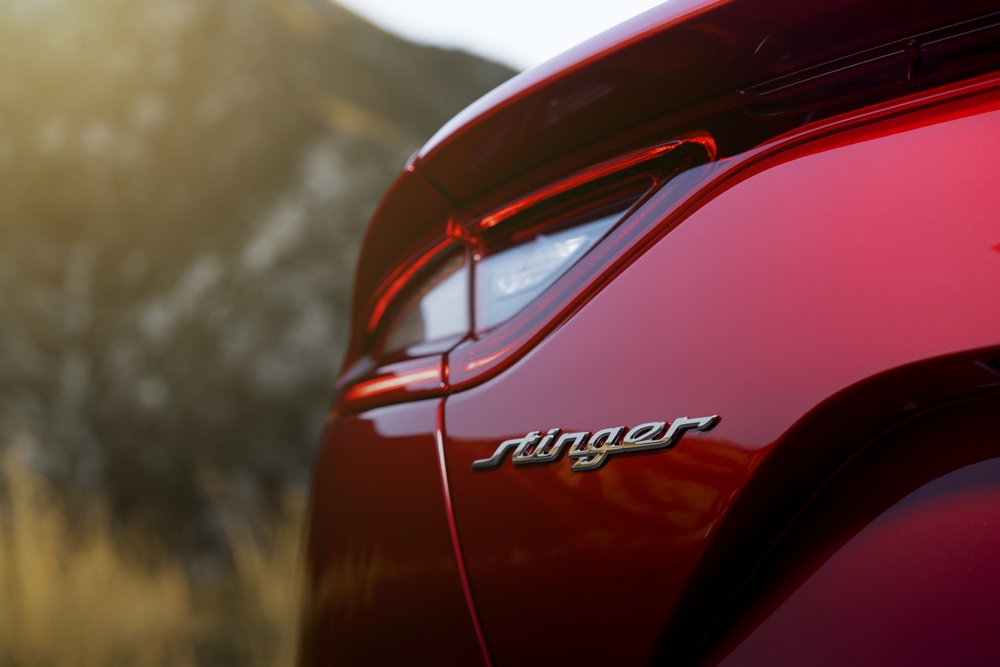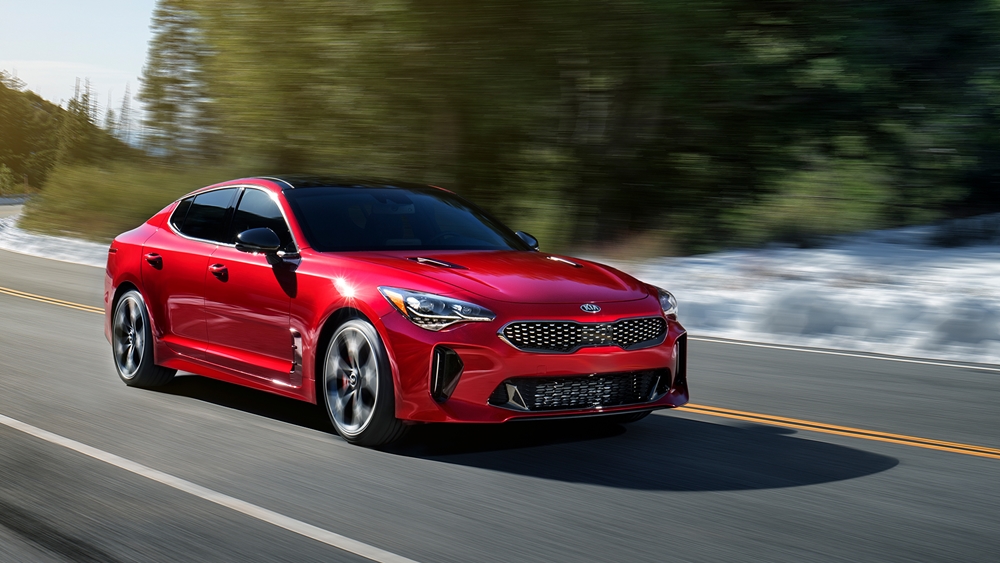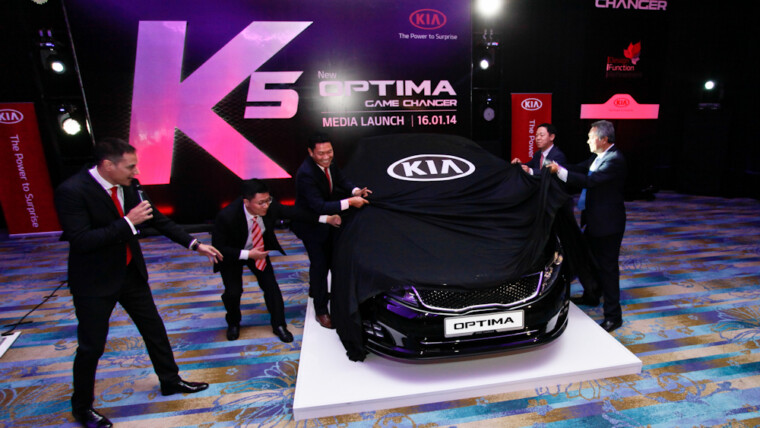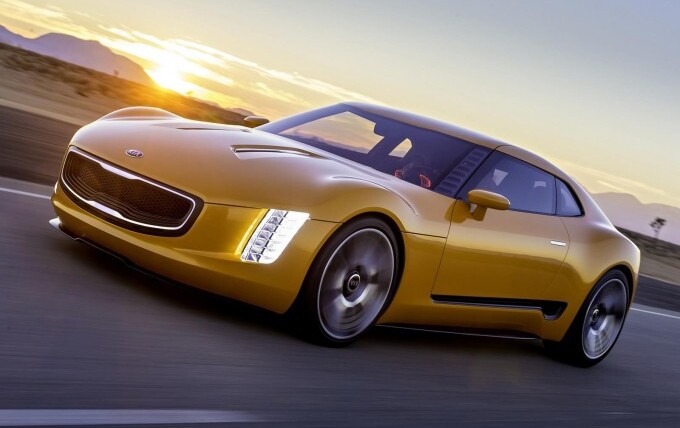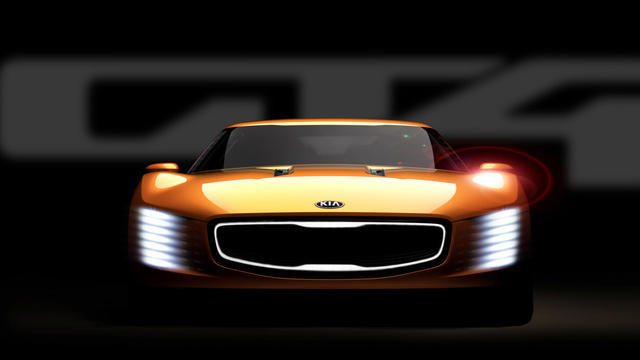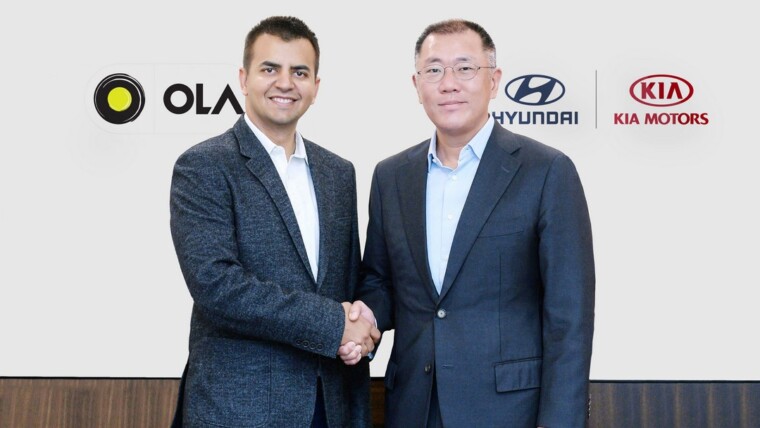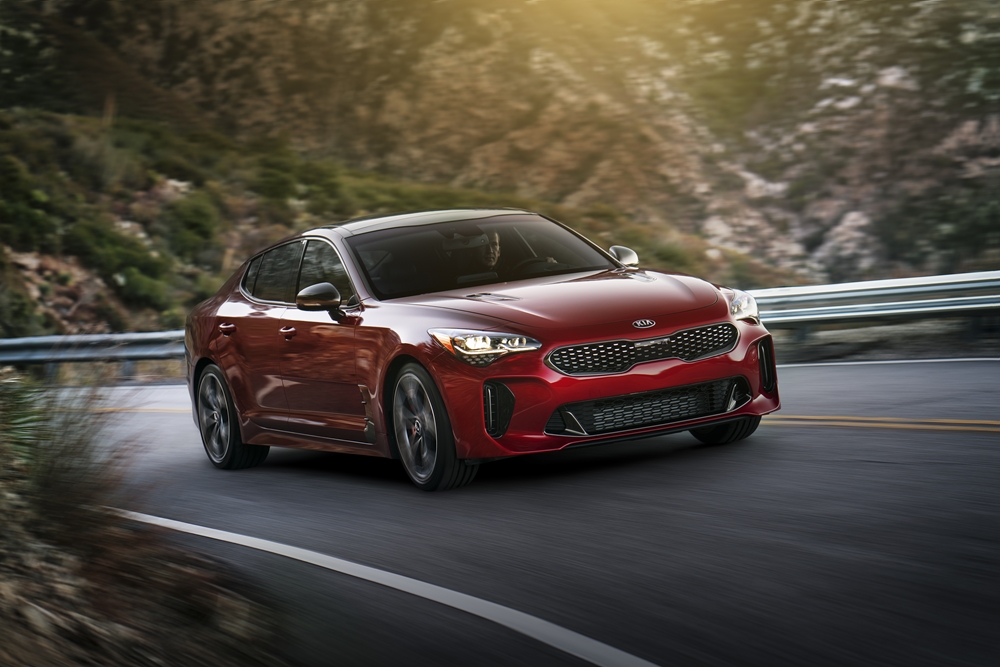
It’s finally here folks, Kia has lifted the veil off the production version of its GT concept called the “Stinger” at the 2017 North American International Auto Show (NAIAS). This five-passenger fastback sports sedan promises to be the highest-performance production vehicle in the company’s history offered with multiple engine and drivetrain configurations.
The all-new Kia Stinger looks almost similar to the concept that preceded it – the GT4 Stinger unveiled at NAIAS in 2014. The Stinger is designed by Peter Schreyer, Kia Motors’ chief design officer, and his team of designers in Frankfurt.
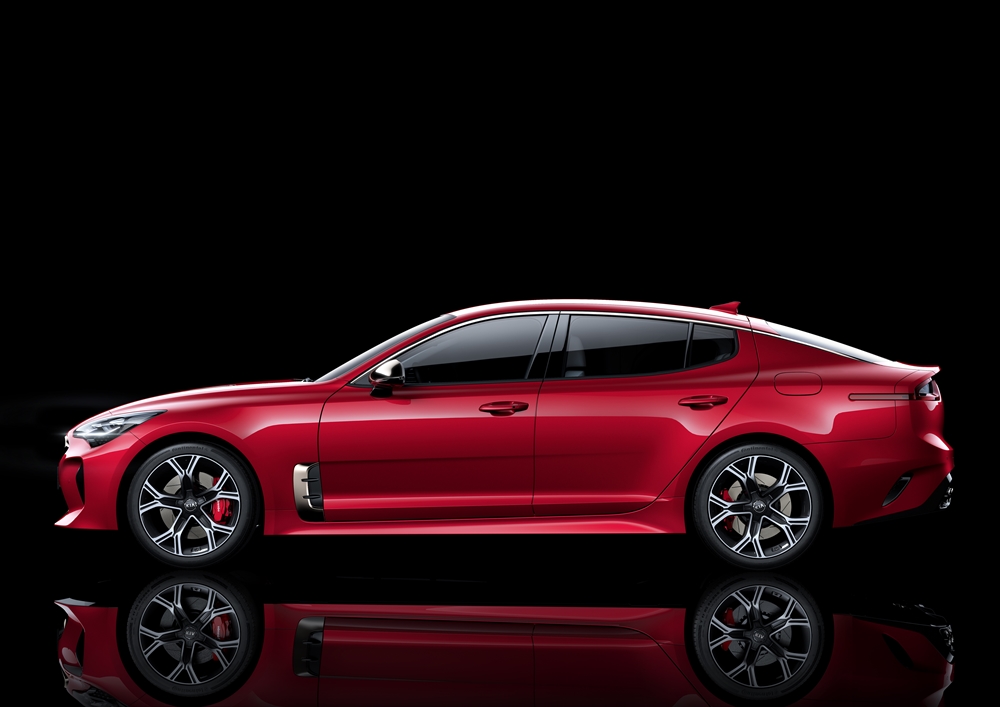
At 2.9 meters, the Stinger’s wheelbase is longer than the Audi A4, Infiniti Q50, Lexus IS, BMW 4 Gran Coupe and even the Lexus GS and Mercedes CLS. It’s also longer overall (4.8 meters) and wider (1.87 meters) than the others in the segment, allowing for spacious accommodations. The Stinger’s cargo area is also larger than many in its class, with enough space for full-size luggage or golf bags and a power liftgate with Smart Trunk functionality is available.
Developed mainly on the Nürburgring, the Stinger represents Kia’s first sedan to be offered with both rear- and all-wheel drive. The rear-wheel drive vehicle gets the benefit of a mechanical limited slip differential while the AWD system will feature a newly developed Dynamic Torque Vectoring Control system which monitors driver inputs and road conditions and automatically applies power and braking force to the appropriate wheels to maintain course in adverse conditions.
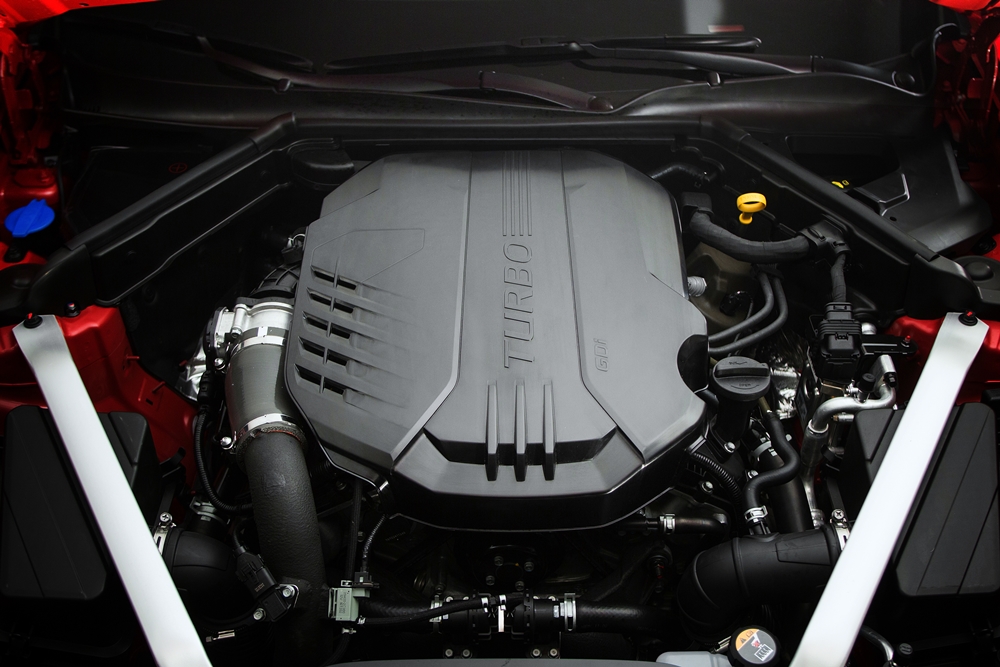
While both engines are still under development, the standard 2.0-liter turbocharged four-cylinder Theta II engine produces an estimated 255hp at approximately 6,200 rpm. and 352Nm of torque available from 1,400 – 4,000 rpm.
As for the Stinger range topper, it will use a 3.3-litre twin-turbo V6 Lambda II engine, which is anticipated to produce 365hp at an estimated 6,000 rpm and offer max torque of 509Nm from 1,300 – 4,500 rpm. Kia is targeting 5.1 seconds to 100km/h and a top speed of 268km/h with the twin turbocharged V6. Both engines will be offered with an 8-speed automatic transmission.
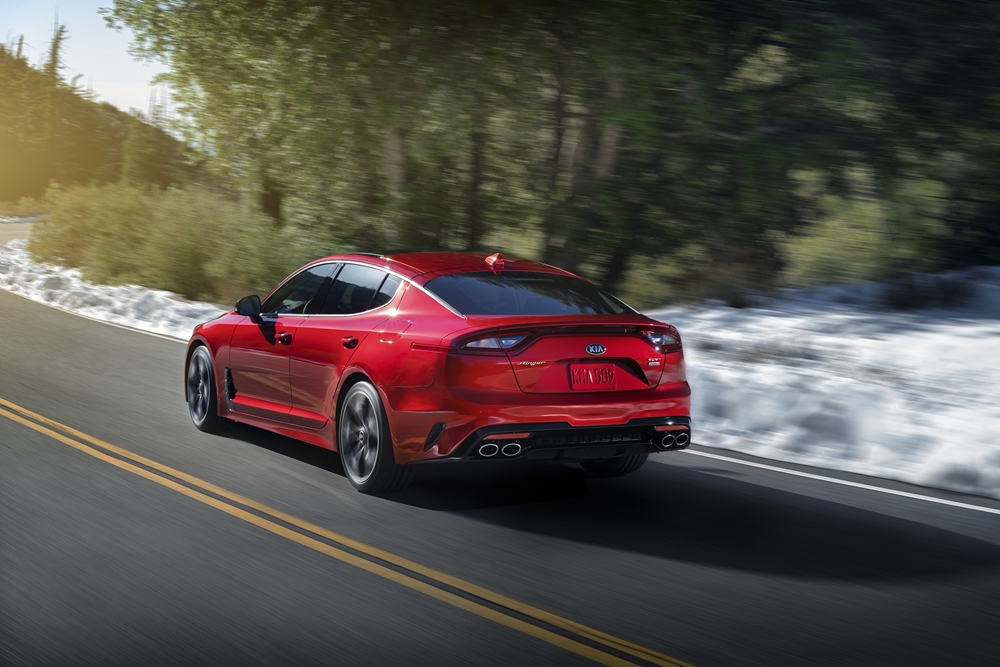
A choice of alloy wheels and tyres are also offered. The 2.0-litre turbocharged 4-cylinder models ride on 225/45R-18 performance tyres while the 3.3-litre V6 is shod with staggered ultra-high performance rubber; 225/40R-19 in front and 255/35R-19 at the rear. Vented Brembo disc brakes are standard on the 3.3-litre twin turbo and feature quad-piston front calipers and dual-piston rear calipers.
Inside the cabin is a space dedicated to the thrill of driving while cossetting the occupants in luxury. Ultra-soft Nappa leather covers the contoured seats and the driver’s seat has air-cell bladders in the seatback and bolsters for support and comfort. The long wheelbase allows for generous front and rear leg room and the low seating position provides ample head room front and back.
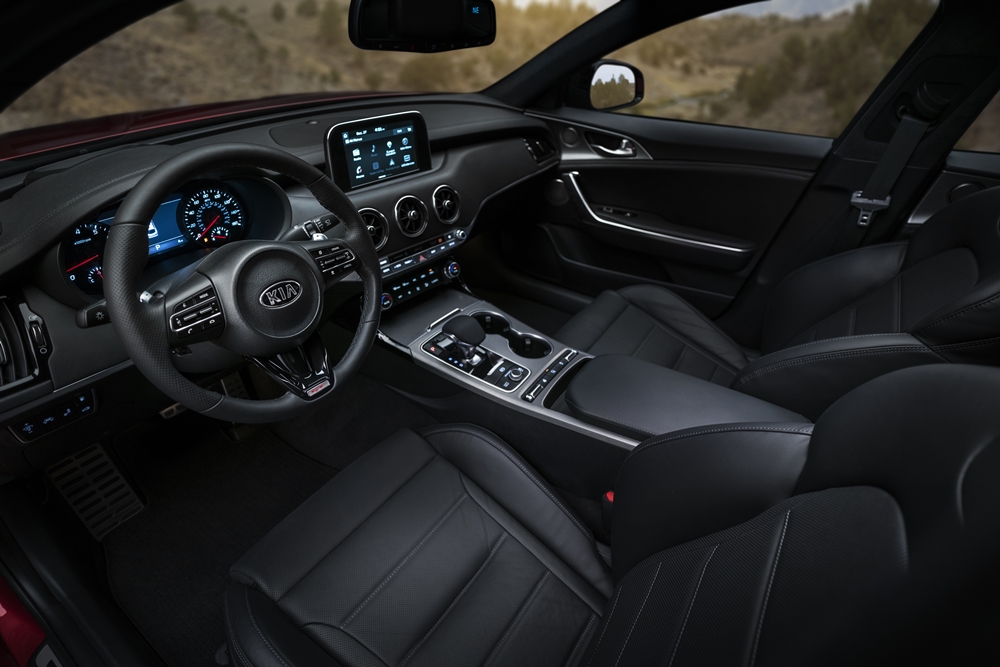
The center console is intuitively split into two specific areas: the infotainment controls sit neatly below a large colour touchscreen, while the climate and ventilation controls nestle beneath. Front and center of the driver is a thick, leather-wrapped steering wheel and a single instrument binnacle with a combination of analog and digital instrumentation. The large gauges are ringed in metal and accentuated with sweeping red needles. A colour TFT screen between the gauges relays performance data such as cornering G-forces, lap times and engine-oil temperature, along with ancillary information such as the trip computer, driver settings, navigation and diagnostics.


2018 Stinger 
2018 Stinger 
2018 Stinger 
2018 Stinger 
2018 Stinger 
2018 Stinger 
2018 Stinger 
2018 Stinger 
2018 Stinger 
2018 Stinger 
2018 Stinger 
2018 Stinger 
2018 Stinger 
2018 Stinger 
2018 Stinger 
2018 Stinger 
2018 Stinger 
2018 Stinger 
2018 Stinger 
2018 Stinger 
2018 Stinger 
2018 Stinger 
2018 Stinger 
2018 Stinger 
2018 Stinger 
2018 Stinger 
2018 Stinger 
2018 Stinger 
2018 Stinger 
2018 Stinger 
2018 Stinger 
2018 Stinger 
2018 Stinger 
2018 Stinger 
2018 Stinger
Other posts by AF Newsdesk


